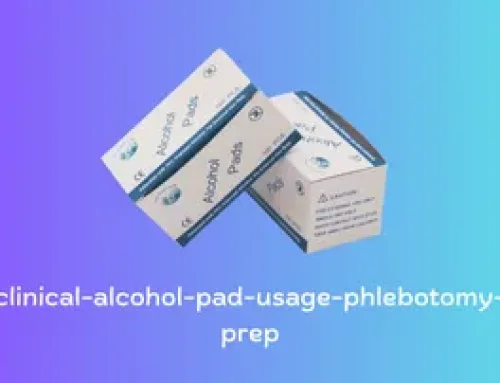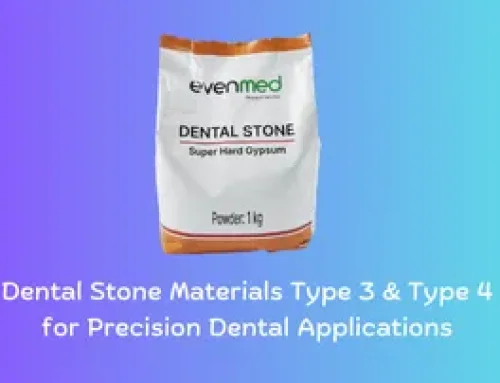As a dentist, taking an accurate dental impression is critical to providing your patients with the best possible treatment. One of the most commonly used impression materials is alginate. Alginate is a popular impression material due to its ease of use and cost-effectiveness. In this article, we will discuss what alginate is, its benefits and drawbacks, and how to use it effectively to create perfect dental impressions.
1. What is Alginate Impression Material?
Alginate is a powder that is mixed with water to create a thick liquid or paste. The paste is used to take impressions of teeth, gums, and other oral structures. Alginate impression material is composed of calcium sulfate, sodium alginate, and other fillers and retardants. The material is available in different viscosities, depending on the intended use and the preference of the dentist.
2. Advantages of Alginate Impression Material
Alginate impression material has several advantages that make it a popular choice for dental impressions. First, it is easy to mix and manipulate, even for novice users. Second, it sets quickly, so the patient does not have to wait long before the impression is removed. Third, it is relatively inexpensive compared to other impression materials. Fourth, it is non-toxic and safe to use.
3. Drawbacks of Alginate Impression Material
Although alginate has many benefits, it also has some drawbacks that can affect the accuracy and quality of the impression. One of the most significant drawbacks is its susceptibility to distortion. Alginate can easily deform if not handled properly, leading to inaccurate impressions. Alginate impressions are also prone to shrinkage over time, which can affect the fit of dental restorations. Additionally, the material has a short working time, so dentists must work quickly to get a good impression.
4. Factors Affecting the Quality of Alginate Impressions
Several factors can affect the quality and accuracy of alginate impressions. One of the most critical factors is the water-to-powder ratio. Using too much or too little water can result in an incorrect mix, leading to distortions and voids in the impression. The temperature and humidity of the room can also affect the setting time of the material and the accuracy of the impression. Finally, the technique used to mix and manipulate the material can affect the quality of the impression.
5. Tips for Using Alginate Impression Material Effectively
To achieve the best results with alginate impression material, dentists should follow these tips:
- Use the correct water-to-powder ratio.
- Mix the material thoroughly and quickly.
- Use a consistent mixing and manipulation technique.
- Use the appropriate viscosity for the intended use.
- Place the impression tray accurately.
- Make sure the patient is comfortable and relaxed.
- Remove the impression gently and quickly.
- Check the impression for distortions and voids.
6. How to Store Alginate Impression Material
Alginate impression material should be stored in a cool, dry place, away from direct sunlight and moisture. The material should be kept in its original container, with the lid tightly closed to prevent contamination.
7. How to Dispose of Alginate Impression Material
Alginate impression material is considered a biohazardous waste and should be disposed of properly. The material should be collected in a designated container and disposed of according to local regulations. Dentists should follow proper infection control protocols when handling and disposing of alginate impression material.
8. Comparison with Other Dental Impression Materials
Alginate impression material is just one of many dental impression materials available on the market. Other materials include polyether, silicone, and hydrocolloid. Each material has its own advantages and drawbacks and is suitable for different types of dental impressions. Dentists should select the appropriate material based on the specific needs of the patient and the procedure.
9. Frequently Asked Questions (FAQs)
- Is alginate impression material safe?
- Yes, alginate impression material is non-toxic and safe to use.
- Can alginate impression material be reused?
- No, alginate impression material cannot be reused as it is considered a biohazardous waste.
- How long does alginate impression material take to set?
- Alginate impression material sets in approximately 2-3 minutes, depending on the type of material used.
- How can I prevent distortions in my alginate impressions?
- Using the correct water-to-powder ratio, mixing the material thoroughly and quickly, and using a consistent technique can help prevent distortions in alginate impressions.
- Is alginate impression material suitable for all types of dental impressions?
- No, alginate impression material is best suited for preliminary impressions and study models. For more complex cases, other impression materials may be more appropriate.
10. Conclusion
Alginate impression material is a popular and cost-effective option for taking dental impressions. However, it has some drawbacks that can affect the accuracy and quality of the impression. By following proper techniques and protocols, dentists can achieve excellent results with alginate impression material. As with any dental material, it is important to stay up-to-date with the latest techniques and best practices to provide the best possible care to your patients.





